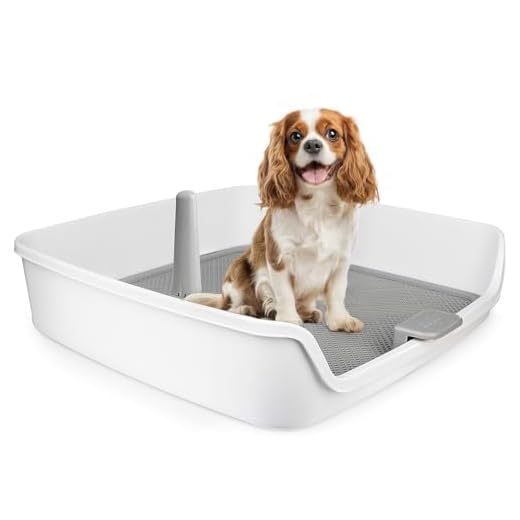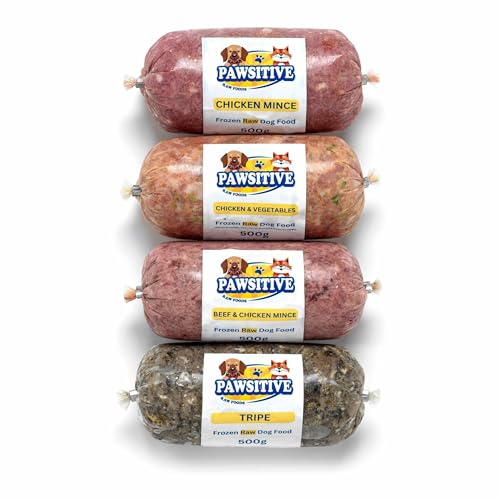








Absolutely feasible to achieve indoor relief for a canine companion. My own experience began when I welcomed a lively puppy into my home. Within weeks, I decided to tackle the challenge of teaching him to go inside rather than outside. A few key principles guided me through the process.
First, consistency is paramount. Establishing a routine helped my pup understand when and where he was expected to relieve himself. I created a designated spot, initially using a specific mat with distinct smells to encourage him. Gradually, I introduced the concept of going on command, using a simple phrase consistently each time.
Positive reinforcement played a significant role. Each successful attempt was met with treats and enthusiastic praise. Over time, he began to associate the action with rewards, making him more willing to follow this new habit. Patience proved invaluable; mistakes happened, but with every setback, I reminded myself that persistence was key.
Moreover, investing in a quality indoor potty solution made a difference. Various products on the market, such as synthetic grass mats, simulate outdoor conditions, enticing pets to use them. I found that choosing a product that mimicked the smell of grass encouraged my pup to explore this option further.
In summary, with the right approach, indoor relief is achievable. Through routine, positive reinforcement, and carefully selected tools, transforming this behaviour into a norm for a furry friend is within reach. Sharing this journey has been rewarding, and I hope these insights help others in their quest for convenience and cleanliness with their beloved pets.
Toilet Training Techniques for Pets
Achieving success with bathroom habits for a furry companion requires patience and consistency. Begin by selecting a specific area or device that mimics a toilet. This could be a puppy pad, a specially designed indoor toilet, or a designated outdoor spot. Make the spot inviting and familiar.
Positive Reinforcement
Utilising positive reinforcement is key. Whenever the pet eliminates in the correct location, reward them immediately with praise or a treat. This encourages them to associate the behaviour with something enjoyable. Timing is crucial; rewards should be given right after the act, so the connection is clear.
Establishing a Routine
Establish a regular schedule for meals and bathroom breaks. Taking the pet out or guiding them to the designated area after meals, playtime, or naps helps create a predictable pattern. Be observant of signs that indicate the need for a bathroom break, such as sniffing or circling.
| Tip | Description |
|---|---|
| Consistency | Stick to the same location and routine for bathroom breaks. |
| Patience | Allow time for the pet to adjust; accidents may happen. |
| Monitoring | Keep an eye on behaviour to predict bathroom needs. |
| Cleanliness | Promptly clean any accidents to remove scents that may encourage repeated behaviour in the wrong area. |
With dedication and the right approach, transitioning to a toilet-like habit can be achieved. Celebrate small victories along the way to maintain motivation for both the pet and owner.
Choosing the Right Toilet Training Method for Your Dog
Consider starting with a method that suits both the temperament and age of your furry friend. Some techniques, like using a designated indoor potty, can be ideal for younger pups or those needing extra guidance. This approach offers a safe space for them to relieve themselves, while also keeping your home clean.
If opting for outdoor relief, establishing a consistent schedule can be beneficial. Take your companion outside at regular intervals, especially after meals or playtime. Reinforce positive behaviour with treats and praise when they perform outside. This builds a strong association between the outdoors and proper elimination.
Another option involves crate training. Dogs naturally avoid soiling their resting area, so a crate can encourage them to hold it until they are let outside. Ensure the crate is sized appropriately; too large may lead to accidents, while too small can cause discomfort.
Consider the option of using training pads if outdoor access is limited. Position these pads in a designated area, gradually moving them closer to the door as your furry friend learns where to go. This gradual transition can ease the process for both of you.
Pay attention to any signs that indicate a need to relieve themselves. Observing behaviours such as sniffing, circling, or whining can guide you in responding promptly. This attentiveness helps to reinforce the right habits.
Each method has its pros and cons. It’s crucial to remain patient and adaptable throughout the process. What works for one may not suit another, so be prepared to try different techniques until you find the perfect fit for your companion. Celebrate small victories, and maintain a positive attitude to keep both you and your furry friend motivated.
Preparing Your Home for Canine Toilet Training
Begin by creating a designated area for the toilet habits of your furry companion. This space should be easily accessible and comfortable, away from the usual hustle and bustle of your household. A quiet corner with a soft surface can help encourage positive experiences.
Remove any distractions in this area. Toys, food bowls, or anything else that could divert attention should be cleared out. The goal is to make this spot inviting yet focused solely on the task at hand.
Introduce a specific surface that mimics what would naturally be found outdoors. This could be artificial turf, puppy pads, or a designated patch of grass if you have an enclosed outdoor space. Familiarity with the texture may ease the transition.
Establish a routine that aligns with the natural behaviours of your pet. Regular feeding times can influence bathroom habits, so keep a consistent schedule. After meals and playtime, take the animal to the designated spot to reinforce the association.
Invest in cleaning supplies that efficiently deal with any accidents. Enzymatic cleaners are particularly effective at eliminating odours, which might otherwise encourage repeat performances in the wrong spots. Be prepared for some mishaps as learning occurs.
Consider using a visual marker, like a bell or a specific sound, to signify when it’s time to head to the designated area. This not only provides clarity but can also foster communication between you and your furry friend.
Be patient during this process. Each animal learns at their own pace, and it’s crucial to remain consistent and supportive. Positive reinforcement through treats or praise can significantly enhance the learning experience.
Lastly, ensure that everyone in the household is on the same page. Consistent commands, routines, and expectations from all family members can prevent confusion and encourage quicker adaptation.
Step-by-Step Guide to Toilet Training Your Dog
Take a moment to establish a consistent routine. Regular schedules help in making your furry friend familiar with the process. Here’s how to proceed:
- Choose a designated area: Select a specific spot for bathroom breaks. This will create a clear association.
- Introduce the area: Bring your canine companion to the chosen spot frequently, especially after meals, playtime, or naps. Encourage them to explore.
- Use cues: Develop a phrase or command that signals it’s time for a bathroom break. Repeating this will help them learn the association.
- Reward system: Offer treats or praise immediately after they relieve themselves in the right spot. Positive reinforcement is key.
- Observe signs: Watch for behaviours like sniffing, circling, or whining. These indicate they need to go out.
- Limit access: Keep them in a confined area when unsupervised. This reduces accidents inside the house and encourages them to wait.
- Be patient: Understand that accidents will happen. Clean up messes thoroughly to remove odours that might encourage repeat behaviour.
Consistency in training sessions is crucial. Repeat the process daily, and ensure everyone in your household follows the same commands and routines. This creates clarity and helps in faster learning.
Progress might take time, but with dedication and persistence, success will follow. Celebrate small victories along the way!
Common Challenges in Dog Toilet Training and How to Overcome Them
Consistency is key; without it, progress can stall. Establish a routine that aligns with regular feeding times. This aids in predicting when your furry companion may need to relieve themselves. For instance, I noticed that my pup would typically need to go after meals and playtime. Keeping a close eye on these patterns is invaluable.
Another hurdle can be anxiety. Stressful environments may lead to accidents indoors. Create a calm space for your pet; consider using best dog food for reactive dogs to support their overall wellbeing. I found that providing a safe, quiet area helped my own dog feel more secure, reducing indoor mishaps.
Unexpected accidents are part of the process. Instead of punishing, redirect attention. If an accident occurs, clean up without fuss; this helps avoid negative associations with bathroom habits. I learned that my dog responded better to positive reinforcement, like treats and praise, when he successfully went outside.
Some breeds may take longer to adapt to this new routine. Patience is crucial. If your pup seems resistant, try alternative methods, such as puppy pads, before gradually transitioning outdoors. I adopted this strategy with my own dog, allowing him to adjust at his own pace.
Finally, consider health issues. If accidents persist despite all efforts, a visit to the vet may be necessary. It’s important to rule out any underlying medical concerns that could be affecting behaviour. I had a similar experience and was relieved to find that a minor health issue was easily treatable, allowing my dog to resume normal habits.
Maintaining Consistency and Reinforcing Good Habits
Establish a schedule for bathroom breaks. Regular intervals, such as after meals, playtime, or waking up, help instil a routine. I found that taking my pup out every two hours initially made a significant difference in her understanding of where to relieve herself.
Positive reinforcement is key. Treats and praise should follow every successful outing. I remember the first time my dog went outside instead of in the house; I celebrated as though she had won an award! This positive association encouraged her to repeat the behaviour.
Consistency in commands is essential. Use the same word or phrase each time, like “go potty,” to create a clear association. When my furry friend heard those words, she knew exactly what was expected, and it became her cue to focus.
Be patient with setbacks. Accidents will happen; it’s part of the learning process. When my dog had an occasional mishap indoors, I remained calm and redirected her outside instead of scolding. This approach reinforced the idea that the outdoors was the appropriate place.
Use a designated spot outdoors for bathroom breaks. A specific area can help your canine associate that location with relieving herself. I chose a corner of my yard, and over time, my pup recognised it as her go-to spot.
Track progress to maintain motivation. Keeping a log of successful outings versus accidents helped me see patterns and adjust our schedule as needed. It also served as a reminder of how far we had come together.
Incorporate gradual changes. If transitioning from pads to outside, slowly move the pads closer to the door, then outside. I noticed that my dog adapted more easily when changes were introduced step by step rather than all at once.
Lastly, enlist help from family members. Consistent commands and routines from everyone in the household ensure that the training remains uniform. I made sure everyone in my home used the same phrases and followed the same schedule, which greatly aided in reinforcing the desired behaviour.








